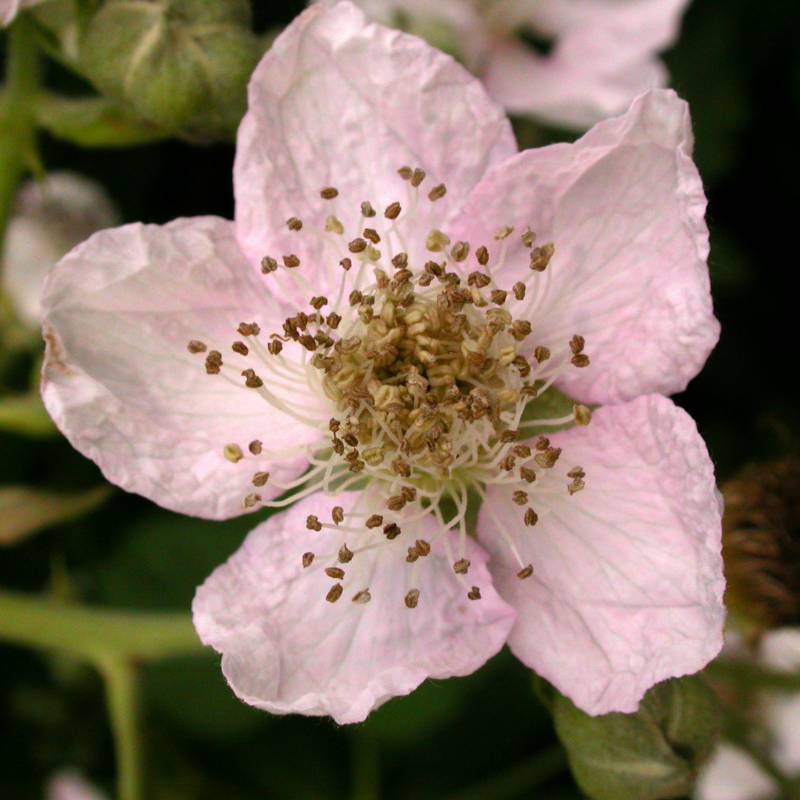Rubus nutkanus
Rubus bifrons
Himalayan blackberry
Leaves mostly 5-foliate, the leaflets broadly oblong to ovate, short acuminate, 6-12 cm. long, sharply serrate, bright green and glabrous above, grayish-woolly beneath.
Inflorescence a flat-topped panicle;
calyx woolly, the 5 segments reflexed, lanceolate, 8-12 mm. long;
petals 5, white to reddish tinged, oval-obovate, 10-15 mm. long;
stamens 100 or more;
pistils many, the style slender, glabrous.
Drupelets coherent, and with the fleshy receptacle forming a nearly globose blackberry 1.5 cm. thick.
Rubus nutkanus
Rubus bifrons
Widely distributed on both sides of the Cascades crest in Washington; Alaska to California, east to Alberta, the Rocky Mountains, and Great Lakes region.
Occurrng on both sides of the Cascades crest in Washington; Alaska to California, east to the Rocky Mountains, southern Great Plains, and eastern North America.
- Local floras:
CA,
OR
- Local Web sites:
CalFlora,
CalPhotos,
Flora NW,
PNW Herbaria
WildflowerSearch
iNaturalist (observations)
- LBJ Wildflower Center
- SEINet
- Plants of the World Online
- Encyclopedia of Life
- Wikipedia
- Google Image Search



